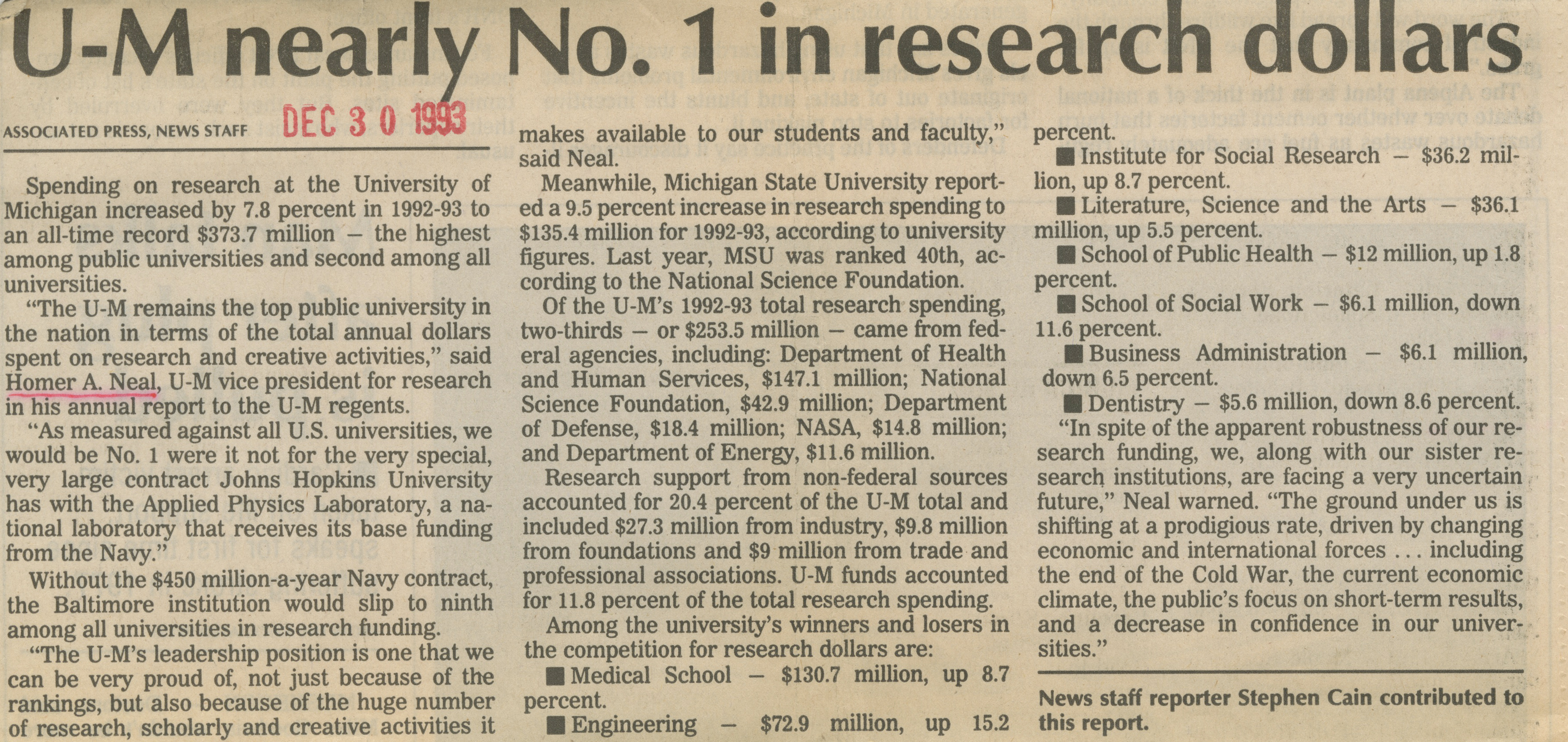U-M Nearly No. 1 In Research Dollars

U-M nearly No. 1 in research dollars
ASSOCIATED PRESS, NEWS STAFF
Spending on research at the University of Michigan increased by 7.8 percent in 1992-93 to an all-time record $373.7 million - the highest among public universities and second among all universities.
“The U-M remains the top public university in the nation in terms of the total annual dollars spent on research and creative activities,” said Homer A. Neal, U-M vice president for research in his annual report to the U-M regents.
“As measured against all U.S. universities, we would be No. 1 were it not for the very special, very large contract Johns Hopkins University has with the Applied Physics Laboratory, a national laboratory that receives its base funding from the Navy.”
Without the $450 million-a-year Navy contract, the Baltimore institution would slip to ninth among all universities in research funding.
“The U-M’s leadership position is one that we can be very proud of, not just because of the rankings, but also because of the huge number of research, scholarly and creative activities it makes available to our students and faculty,” said Neal.
Meanwhile, Michigan State University reported a 9.5 percent increase in research spending to $135.4 million for 1992-93, according to university figures. Last year, MSU was ranked 40th, according to the National Science Foundation.
Of the U-M’s 1992-93 total research spending, two-thirds - or $253.5 million - came from federal agencies, including: Department of Health and Human Services, $147.1 million; National Science Foundation, $42.9 million; Department of Defense, $18.4 million; NASA, $14.8 million; and Department of Energy, $11.6 million.
Research support from non-federal sources accounted for 20.4 percent of the U-M total and included $27.3 million from industry, $9.8 million from foundations and $9 million from trade and professional associations. U-M funds accounted for 11.8 percent of the total research spending.
Among the university’s winners and losers in the competition for research dollars are:
■ Medical School - $130.7 million, up 8.7 percent.
■ Engineering - $72.9 million, up 15.2 percent.
■ Institute for Social Research - $36.2 million, up 8.7 percent.
■ Literature, Science and the Arts - $36.1 million, up 5.5 percent.
■ School of Public Health - $12 million, up 1.8 percent.
■ School of Social Work - $6.1 million, down 11.6 percent.
■ Business Administration - $6.1 million, down 6.5 percent.
■ Dentistry - $5.6 million, down 8.6 percent.
“In spite of the apparent robustness of our research funding, we, along with our sister research institutions, are facing a very uncertain future,” Neal warned. “The ground under us is shifting at a prodigious rate, driven by changing economic and international forces ... including the end of the Cold War, the current economic climate, the public’s focus on short-term results, and a decrease in confidence in our universities.”
News staff reporter Stephen Cain contributed to this report.